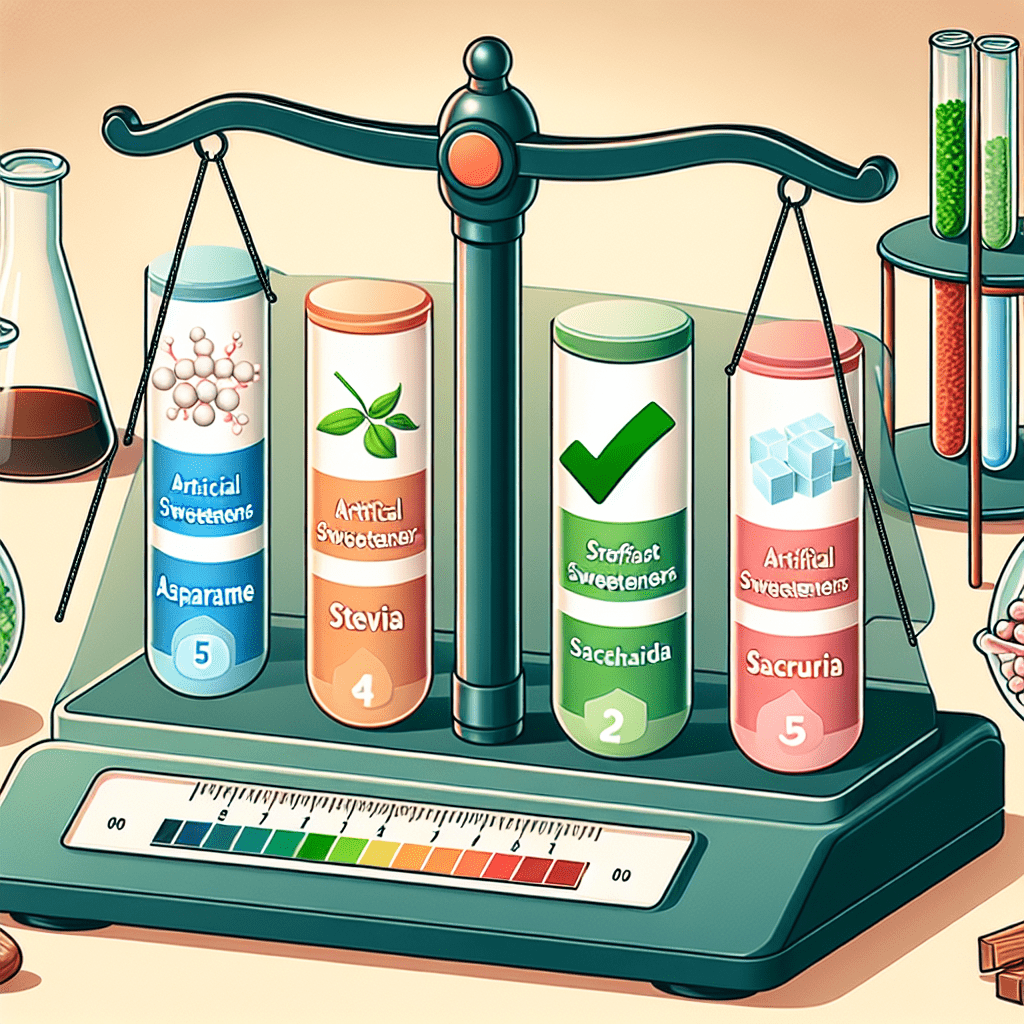-
Table of Contents
What is the Safest Artificial Sweetener to Use?
Artificial sweeteners have become increasingly popular as a sugar substitute in recent years. With concerns about the negative health effects of consuming too much sugar, many people are turning to artificial sweeteners as a way to satisfy their sweet tooth without the guilt. However, with so many options available on the market, it can be difficult to determine which artificial sweetener is the safest to use. In this article, we will explore the different types of artificial sweeteners and their safety profiles, providing you with valuable insights to make an informed decision.
The Rise of Artificial Sweeteners
Artificial sweeteners were first introduced as a sugar substitute in the early 20th century. Since then, they have gained popularity due to their low-calorie content and ability to provide a sweet taste without the negative health effects associated with sugar consumption. Artificial sweeteners are commonly used in a variety of products, including diet sodas, sugar-free desserts, and low-calorie snacks.
The Different Types of Artificial Sweeteners
There are several different types of artificial sweeteners available on the market, each with its own unique properties and safety profile. Let’s take a closer look at some of the most commonly used artificial sweeteners:
1. Aspartame
Aspartame is one of the most widely used artificial sweeteners and is commonly found in diet sodas, chewing gum, and sugar-free desserts. It is approximately 200 times sweeter than sugar and has a negligible calorie content. However, there have been concerns about the safety of aspartame, with some studies suggesting a potential link to cancer and neurological disorders. Despite these concerns, regulatory agencies such as the U.S. Food and Drug Administration (FDA) and the European Food Safety Authority (EFSA) have deemed aspartame safe for consumption within acceptable daily intake limits.
2. Sucralose
Sucralose is another popular artificial sweetener that is approximately 600 times sweeter than sugar. It is commonly used in a variety of products, including baked goods, beverages, and tabletop sweeteners. Unlike aspartame, sucralose is not metabolized by the body and is excreted unchanged, making it virtually calorie-free. Numerous studies have been conducted on the safety of sucralose, and regulatory agencies have consistently deemed it safe for consumption.
3. Stevia
Stevia is a natural sweetener derived from the leaves of the Stevia rebaudiana plant. It is often marketed as a “natural” alternative to artificial sweeteners. Stevia is significantly sweeter than sugar, with some extracts being up to 300 times sweeter. It has gained popularity in recent years due to its low-calorie content and perceived safety. The FDA has approved certain purified stevia extracts as a food additive, and it is generally considered safe for consumption. However, some studies have raised concerns about potential reproductive and cardiovascular effects, although further research is needed to confirm these findings.
4. Saccharin
Saccharin is one of the oldest artificial sweeteners and is approximately 300-500 times sweeter than sugar. It is commonly used in tabletop sweeteners, beverages, and processed foods. Saccharin has been the subject of controversy due to early studies linking it to bladder cancer in rats. However, subsequent research has shown that the mechanism of bladder cancer in rats is not relevant to humans. Regulatory agencies have deemed saccharin safe for consumption within acceptable daily intake limits.
Considerations for Choosing the Safest Artificial Sweetener
When choosing an artificial sweetener, it is important to consider several factors, including safety, taste, and intended use. Here are some key considerations to keep in mind:
- Safety: Look for artificial sweeteners that have been approved by regulatory agencies such as the FDA and EFSA. These agencies conduct rigorous safety assessments before approving artificial sweeteners for consumption.
- Taste: Artificial sweeteners vary in taste, and some may have a bitter aftertaste. It is important to choose a sweetener that suits your taste preferences.
- Intended Use: Consider the intended use of the sweetener. Some artificial sweeteners are better suited for baking, while others are more suitable for beverages or tabletop use.
Conclusion
Choosing the safest artificial sweetener can be a daunting task, given the wide variety of options available on the market. However, by considering factors such as safety, taste, and intended use, you can make an informed decision. Aspartame, sucralose, stevia, and saccharin are all approved by regulatory agencies and considered safe for consumption within acceptable daily intake limits. Ultimately, the choice of which artificial sweetener to use comes down to personal preference and individual health considerations. Remember to enjoy artificial sweeteners in moderation as part of a balanced diet and consult with a healthcare professional if you have any specific concerns.
